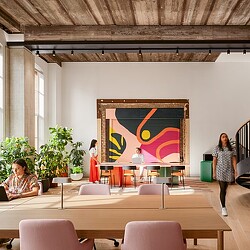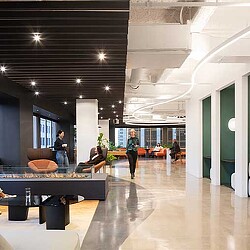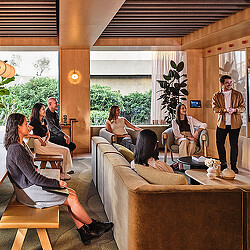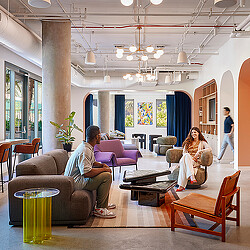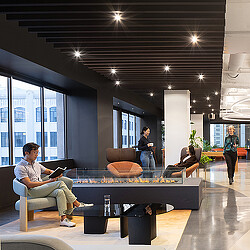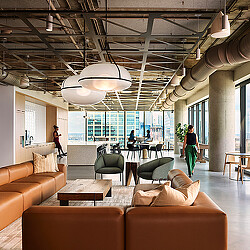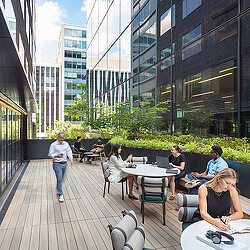Debunking 3 Myths About Generational Differences in the Workplace
As generational differences are narrowing, organizations should focus their workplace strategies across the entire talent spectrum.
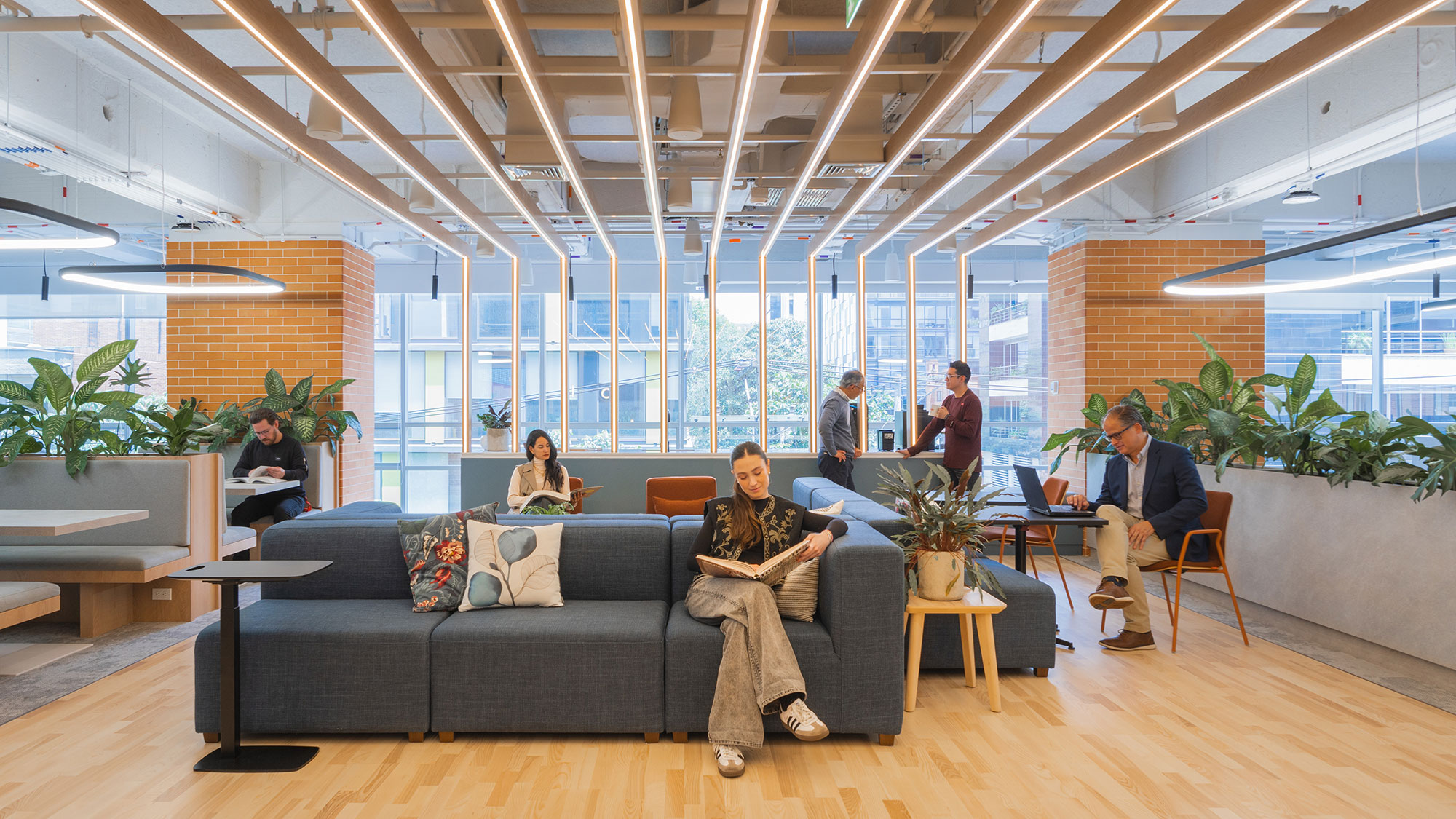
Note: This is the fifth blog of a series unpacking the detailed findings of Gensler’s Global Workplace Survey 2025. Read part one, part two, part three, and part four.
Today’s workforce is more generationally diverse than ever before. In many organizations, four main age groups dominate: Gen Z (those in their 20s), Millennials (30s-early 40s), Gen X (late 40s–50s), and Baby Boomers (60+). Yet increasingly, the edges of this spectrum are expanding. Some members of the Silent Generation remain engaged in part-time roles well into their 70s and 80s, while the earliest members of Generation Alpha — born after 2010 — are just beginning to enter the workforce as student interns or in part-time roles.
This unprecedented range brings both opportunity and complexity. Each generation brings its own lived experiences, expectations, and work habits shaped by the times in which they came of age. For workplace designers and business leaders, the challenge has often been framed around generational difference: How do we design for such a wide range of needs?
Gensler’s 2025 Global Workplace Survey — capturing the voices of over 16,000 office workers across 15 countries — reveals a more nuanced picture. While there are distinctions across age groups, there is also significant alignment, especially around what people want from the office and how they use it.
We explore three common myths about generational differences — and uncover what the data tells us instead.
Key takeaways:
- Core reasons for coming into the office are strikingly consistent across age groups.
- Across generations, workers have a shared vision for their ideal workplace.
- Cultural context plays a greater role than age alone in shaping workplace preferences.
Myth One: Each generation uses the office for different reasons.
What the Data Shows: Core reasons for coming into the office are strikingly consistent across age groups.
Workers across generations cite the same top reasons for in-office work: the ability to focus on their work, attend scheduled team meetings, socialize with colleagues, access technology, and sit with their teams.
However, there are some subtle distinctions. Younger workers (ages 18–29) are more likely to prioritize professional development, which ranks among their top five reasons to come into the office. This highlights the importance of mentorship and learning in early career stages. Older workers (in their 40s–60s) tend to emphasize access to specific spaces, tools, and senior leadership — resources that support their work but may be less visible to younger peers.
These insights suggest that the workplace must support both structured collaboration and informal learning to be effective across generations.
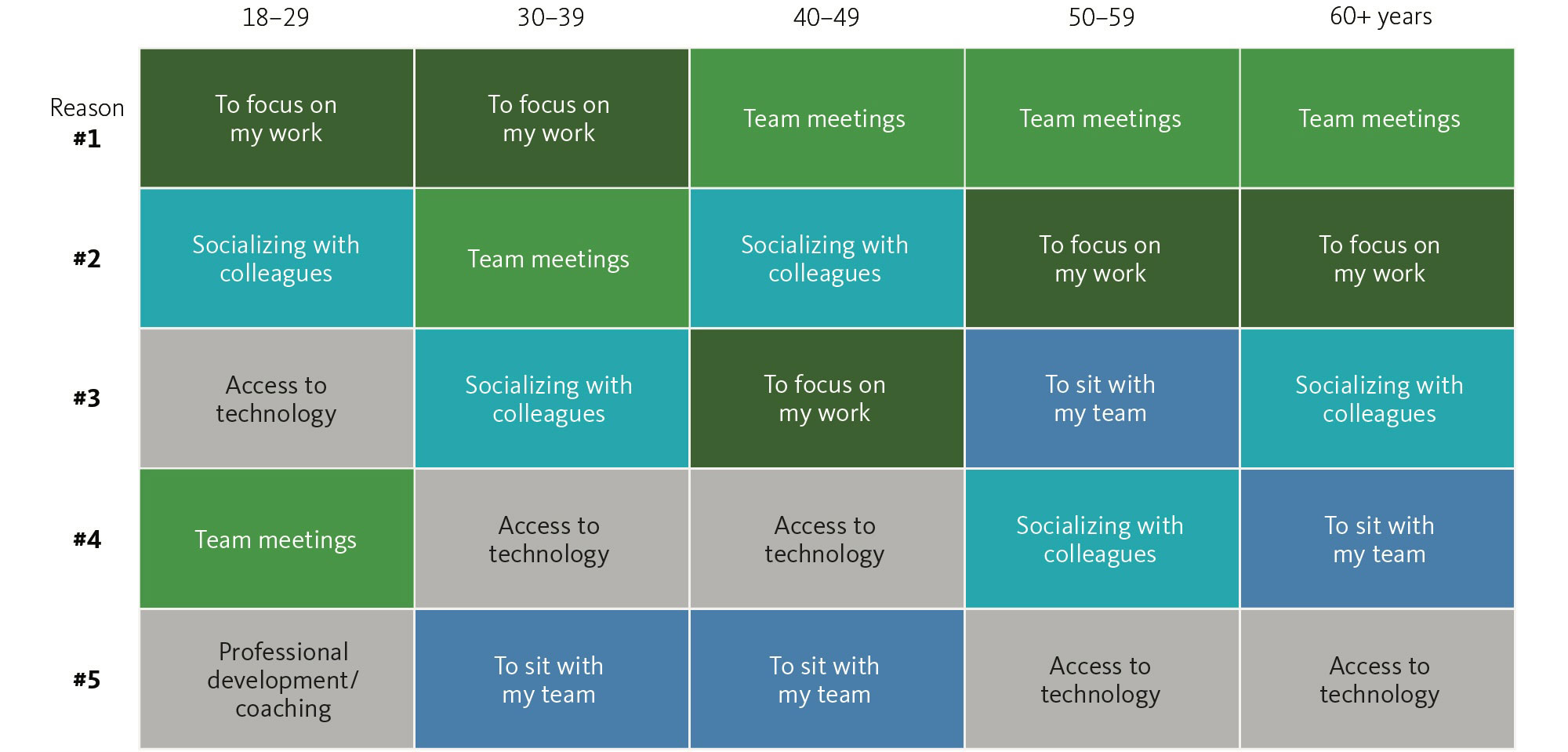
Myth Two: Younger generations want a different workplace experience.
What the Data Shows: There’s broad alignment around the ideal workplace — regardless of age.
While today’s workplaces are often described as businesslike or “corporate,” our research finds that employees across all age groups are seeking something different for the future: spaces that foster creativity, enhance well-being, and create a sense of connection.
In fact, while 31% of workers describe their current office experience as a “business hub,” only 14% selected that as their ideal. Instead, workers of all generations are drawn to environments that feel connected to the outdoors and offer opportunities for restoration, as well as flexible, energetic spaces that spark imagination and experimentation.
These preferences signal a clear shift. Across generations, there is a shared desire for environments that support the full spectrum of human experience — not just productivity, but creativity, connection, and care.
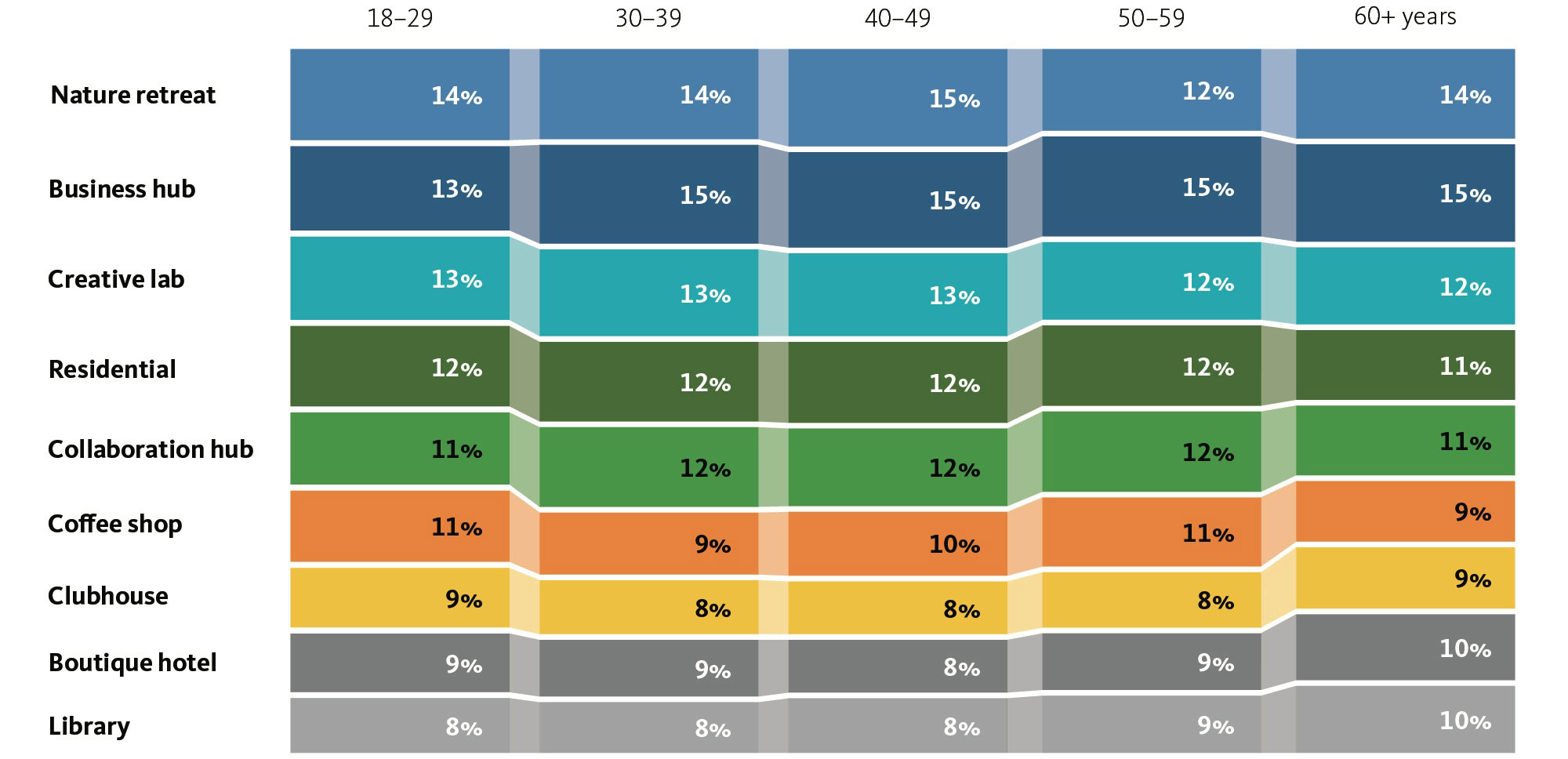
Myth Three: Generational preferences are globally consistent.
What the Data Shows: Cultural context plays a greater role than age alone.
While generational trends appear relatively consistent across geographies, differences emerge within countries. Local culture, business norms, and societal expectations all influence how people perceive the workplace — and what they value most in it.
In Japan, Germany, and Saudi Arabia, older generations (ages 40–59) continue to prioritize the structure and professionalism of business-like settings. In Australia and the UAE, nature retreat experiences appeal across generations, signaling a growing desire for well-being and outdoor connection. In Costa Rica, older respondents are drawn to residential spaces that feel home-like and personal, while in Germany, this is true for younger respondents.
These variations by country underscore that while age can shape workplace preferences, geography often plays a more decisive role. This requires tuning into the regional nuances that influence how people experience work and place.

Designing for all generations
For years, organizations have focused their workplace strategies on the expectations of the youngest generation entering the workforce. While that remains important, today’s data shows that generational differences are narrowing, and that designing for inclusion means looking across the entire talent spectrum.
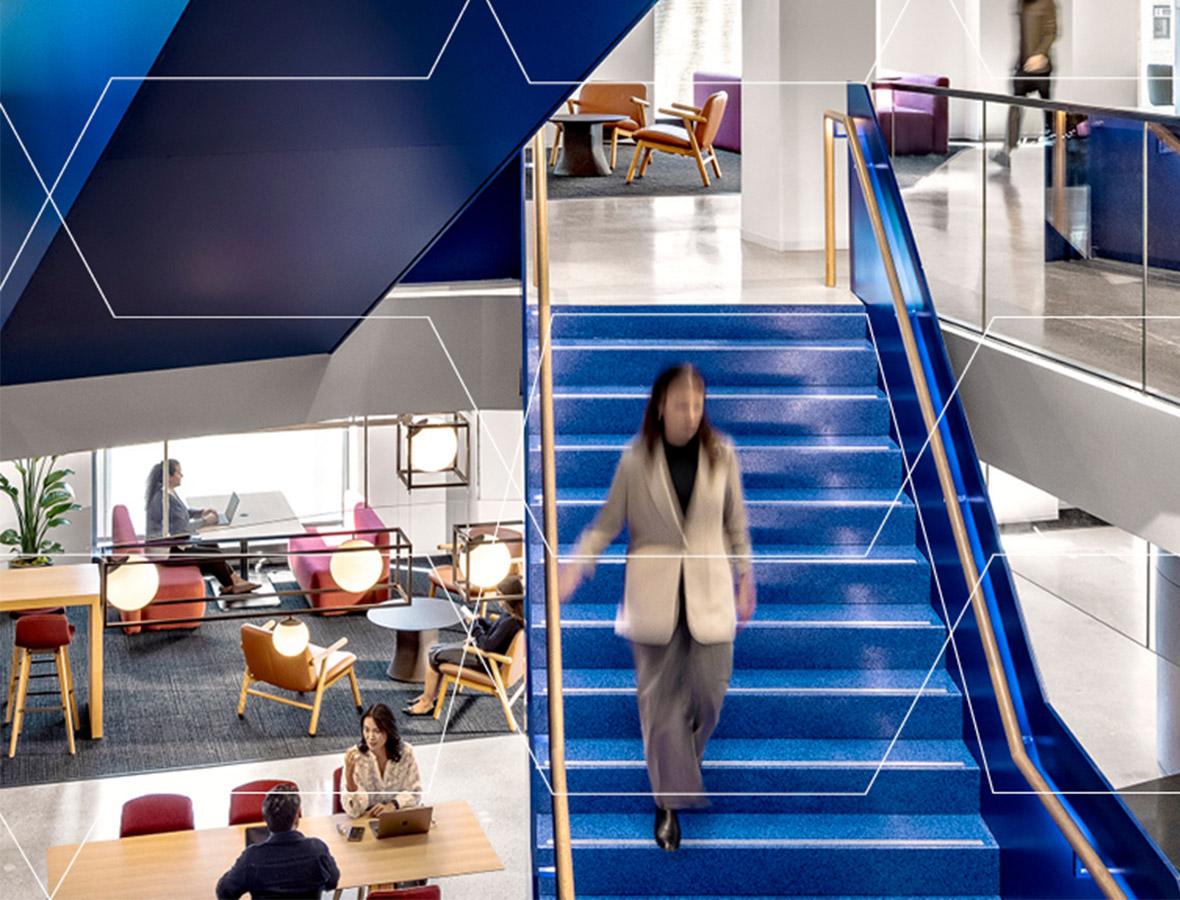
For media inquiries, email .


